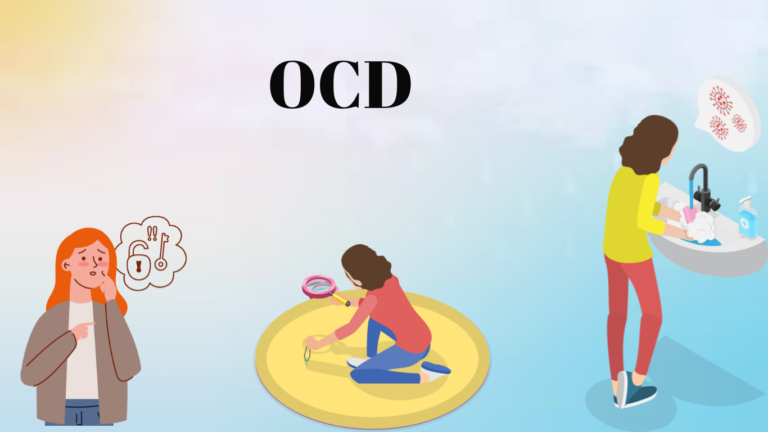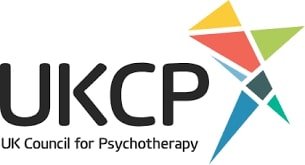
What is OCD?
Obsessive-Compulsive Disorder (OCD) is a common mental health condition, defined by unwanted intrusive thoughts (obsessions) and ritualistic behaviours (compulsions); at current, OCD affects millions of people in the world (American Psychiatric Association, 2013; NIMH, 2011).
Obsessive Compulsive Disorder (OCD) is often incorrectly portrayed as a quirky penchant for cleanliness or a habit of scrupulous organisation. However, the implications are much more serious; compulsive habits can impede regular habits and routines, ultimately leading to loss of quality of life (NIMH, 2011).
An common, if not defining, characteristic of OCD is its cycle (loop) of obsessions and compulsions, the two main components of the disorder (Stein et al., 2010). Obsessions in OCD are defined as being intrusive, persistent and/or unwanted patterns of thought, mental images or urges which elicit an internally experienced psychological alarm; compulsions are repetitive behaviours or mental processes that a person feels driven to engage in in response to an obsessive thought, belief or idea in an attempt to reduce the anxiety that that thought induces (Stein et al., 2010).
This article aims to clarify what it means to have OCD as a condition, and combat the misunderstandings and stigma which often overshadows the popular interpretation of OCD, describing its causes, symptoms and treatment options, both pharmacological (where indicated/prescribed) and psychological.
This article is for educational and informational purposes only. Please see full disclaimer below.
Common Symptoms of OCD:
Generally, the symptoms of OCD can be divided into two groups: obsessions and compulsions.
Obsessions, in this context, are frequent, unwelcome intrusive thoughts, which can include:
- Fear of dirt/germs (contamination; Stein et al., 2010),
- Intrusive thoughts which are aggressive/obsessive,
- A psychological need for precision, or symmetry,
- Intrusive thoughts related to religiosity, spirituality and/or sexuality.
Compulsions, on the other hand, are repeated actions or thought processes that people with OCD feel compelled to perform. These may include:
- Over-cleansing/washing hands too frequently/often.
- Checking and double-checking locks, appliances, and/or switches.
- Counting, tapping, and/or saying the same words repeatedly.
- Hoarding things that have little if any market value, or for which none exists (Stein et al., 2010).
While these behaviours can help reduce immediate anxiety in the here and now for the person with OCD, they often exacerbate the obsessive-compulsive cycle in the long run, eating away at the person with OCD and making their life difficult (NIMH, 2011).
This is why OCD isn’t just something related to behaviours or personality traits. Living with OCD can have a huge impact on relationships: interactions with family and friends, for example, where relationships can be strained, and also on education and work life (e.g. at school or work, making one less productive or argumentative). Overall, this has a negative effect on quality of life and wellbeing, which can also make one feel frustrated, guilty and isolated (Stein et al., 2010).
OCD is frequently found alongside other mental health conditions such as depression, anxiety or stress; if this comorbidity goes unaddressed, it can aggravate the struggle individuals experience facing multiple mental health conditions/issues (NIMH, 2011).
Causes of OCD
The specific causes of OCD as a mental health condition are not generally understood.
However, there are several factors (biological, genetic, cognitive and environmental) which researchers believe may increase the risk of individuals developing OCD.
Imbalances in neurotransmitters (brain chemicals) such as serotonin have been found in people with OCD in biological research. Additionally, fMRI and other clinical studies have demonstrated abnormal activity in areas of the brain in clinical presentations of OCD, such as the basal ganglia and orbitofrontal cortex (OFC; Goodman et al., 2004).
Genetically, although no single gene or allele has been implied in the pathogenesis of OCD, people with OCD are more likely to have first-degree relatives with a history of OCD. This might indicate a genetic link of some sort in being more predisposed to the condition amongst some families (American Psychiatric Association, 2013).
Of note, on a cognitive level, maladaptive beliefs regarding control and responsibility can also, in turn, lead to obsessive thoughts and compulsive behaviours which reflect these underlying beliefs (Abramovitz, 2009).
OCD can emerge related to environmental factors such as chronic stress, traumatic life experiences, or massive life change (Foa et al., 2005).
Which therapeutic options are available for OCD?
OCD treatment options include psychotherapy (particularly cognitive-behavioural therapy (CBT)), medications (SSRIs, etc.), mindfulness practice/relaxation techniques and support groups.
These therapeutic approaches can significantly improve, or alleviate, OCD symptoms, thereby enhancing quality of life and wellbeing.
Cognitive behavioral therapy (CBT) is a psychotherapeutic modality known to aid individuals with OCD in identifying their behavioural compulsions and cognitive patterns, assisting them to significantly alter negatively impacting, including distressing, behaviours (Abramowitz, 2009).
Exposure and Response Prevention (ERP) is a form of CBT which involves gradually exposing someone to feared situations while preventing compulsive responses, and is recommended for some individuals with OCD. (Foa et al., 2005)
Medications such as the Selective Serotonin Reuptake Inhibitors (SSRIs) (namely, fluoxetine (Prozac) and sertraline) can be prescribed to those with OCD to help balance brain chemistry (increase the amount of the neurotransmitter serotonin; NIMH, 2011), thus alleviating OCD symptoms.
People who suffer from OCD may also practice mindfulness (alongside other relaxation exercises such as deep breathing and meditation) in order to improve their anxiety.
People with OCD can benefit from being in a group of other people with OCD (support groups), where they are able to relate to each other and help each other along the path to mental wellness.
Self-help options for managing OCD
Although is generally necessary to take professional help in order to treat OCD, it is important to look into self-help options for managing OCD, which can complement medical treatment.
These include some of the following practices:
- Restricting avoidant behaviours, with gradual exposure to feared situations to ameliorate the impact of intrusive thoughts and obsessions.
- Self-education (about OCD and its underlying processes), which helps build awareness enabling to self-compassion and reducing self-judgement and consequent harms.
- Self-challenging own negative thoughts, particularly by identifying thought patterns that you know to be irrational or some other form of negative repetitive way of thinking and challenging them, can help to reframe them positively (see CBT for example; Abramovitz, 2009).
- Having realistic expectations around your mental health journey and not being hard on yourself for not reaching where you want to reach in that time period
Most importantly, taking care of yourself by doing things that are good for your body and your mind is essential.
Breaking the Stigma Surrounding OCD
Despite increased awareness, OCD continues to be misunderstood by many people, often being portrayed as mere personality quirks relating to perfectionism, or cleanliness, in the popular imagination.
Misconstruing OCD as eccentricity belies its seriousness as a mental health condition; breaking the stigma of OCD thus requires education, advocacy, and most important of all, empathy.
Common myths about OCD include the following:
- Myth: “OCD is just about being excessively clean, tidy or organised.”
- Fact: OCD is a serious mental health disorder that causes intrusive thoughts and distressing compulsions. not merely a pronounced preference for cleanliness or orderliness.
- Myth: “People with OCD can just stop if they try hard enough.”
- Fact: OCD is not a choice, and overcoming it and its symptoms (intrusive thoughts, obsessive behaviours) often requires professional therapy, medication, and ongoing support.
- Myth 3: “OCD is rare.”
- Fact: It is estimated that 1–2% of the population worldwide have OCD, which makes it a relatively common mental health condition.
Listening without judgement, by offering a safe space for individuals with OCD to share their experiences with others, avoiding labelling, and putting the individual first, not their condition, and encouraging open conversations about OCD and other mental health conditions/issues to break the silence surrounding them, facilitate understanding OCD (and other mental health conditions) from a place of empathy, both on an individual and societal level.
Even though almost everyone experiences some form of intrusive thought from time to time, individuals with OCD can find these thoughts almost impossible to consciously dismiss, which leads to behaviour that can disrupt their daily lives and its quality.
Conclusion:
In a nutshell, OCD is a complex and serious mental health condition that is much more than the everyday quirks of neatness and organisation. It features a vicious cycle of obsessions and compulsions that can drastically impact daily functioning and quality of life. Whatever the origin — biological, genetic, cognitive or environmental — the treatment approach for OCD is multifaceted and may involve cognitive-behavioral therapy, medications, mindfulness practices and support groups. We can help reduce the stigma surrounding OCD and encourage people to seek help, which will in turn overcome the myths surrounding OCD.
FAQ:
Q: What is OCD?
A: OCD is a mental health condition characterised by unwanted, intrusive thoughts (obsessions) and repetitive behaviours or mental rituals (compulsions) performed to alleviate the anxiety thereby caused by these thoughts (Stein et al., 2010; NIMH, 2011).
Q: How common is OCD?
A: It is estimated that approximately 1–2% of the global population is affected by OCD, making it a relatively common disorder (NIMH, 2011; American Psychiatric Association, 2013).
Q: What are the common symptoms of OCD?
A: Common symptoms include obsessions such as fear of contamination, aggressive or intrusive thoughts, and a need for symmetry, as well as compulsions like excessive hand-washing, checking locks, repetitive counting or tapping, and hoarding (Stein et al., 2010).
Q: What causes OCD?
A: The exact causes are not fully understood, but factors such as imbalances in serotonin, genetic predisposition, maladaptive cognitive beliefs, and environmental stressors (e.g. trauma) all play a role (Goodman et al., 2004; Abramowitz, 2009; Foa et al., 2005).
Q: How is OCD treated?
A: Effective treatments include cognitive-behavioural therapy (CBT), particularly exposure and response prevention (ERP), medications like SSRIs, mindfulness practices, and support groups (Abramowitz, 2009; Foa et al., 2005; NIMH, 2011).
Q: Can self-help strategies help manage OCD?
A: Yes. Self-help strategies such as gradual exposure to feared situations, self-education, challenging irrational thoughts, and maintaining a healthy lifestyle can complement professional treatment (Abramowitz, 2009).
References:
- Abramowitz, J.S. (2009) Obsessive-Compulsive Disorder: Advances in Diagnosis and Treatment. The Lancet, 374(9688), pp. 491–499.
- American Psychiatric Association (2013) Diagnostic and Statistical Manual of Mental Disorders (5th ed.). Arlington, VA: American Psychiatric Publishing.
- Foa, E.B., et al. (2005) ‘Exposure and Response Prevention for Obsessive-Compulsive Disorder: A Review and New Directions’, Journal of Anxiety Disorders, 19(6), pp. 645–674.
- Goodman, W.K., et al. (2004) ‘The Neurobiology of Obsessive-Compulsive Disorder’, Biological Psychiatry, 55(3), pp. 302–310.
- National Institute of Mental Health [NIMH] (2011) Obsessive-Compulsive Disorder (OCD). Available at: https://www.nimh.nih.gov/health/topics/obsessive-compulsive-disorder-ocd (Accessed: 15 February 2025).
- NICE (2005) Obsessive-Compulsive Disorder: Core Interventions in the Treatment of OCD and Body Dysmorphic Disorder. London: National Institute for Health and Care Excellence.
- Stein, D.J., et al. (2010) ‘Obsessive-Compulsive Disorder’, The Lancet, 376(9753), pp. 491–499.”
Disclaimer: The author, Sabbir Ahmed, is a registered psychotherapist (UKCP Reg: 2011164676). Sabbir has written this article for informational and educational purposes only, and referenced relevant sources when writing this article.
Reading this article, in and of itself, does not create a therapist–client relationship.
All content is provided on an “as is” basis; no guarantees are made as to its accuracy or completeness.
The information contained on Kind Soul Psych is for general information purposes only and does not purport to be, or constitute, medical and/or legal advice.




All Rights Reserved.

